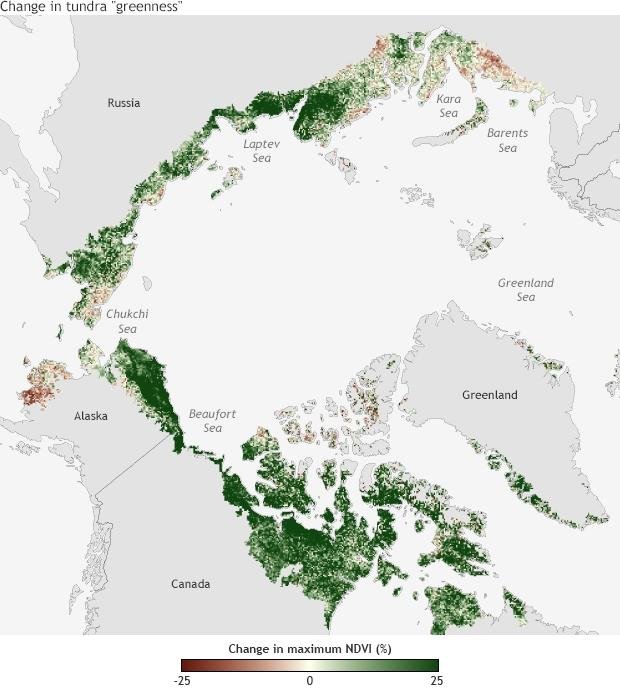Satellite-based images showing the change in vegetation greenness at the peak of the growing season in the Arctic between 1982-2012. The dark green areas have seen the greatest increase in vegetation.
The Arctic is getting warmer and greener, despite having a cooler summer this year, this according to the Arctic Report Card 2013 released Thursday by the National Oceanic and Atmospheric Administration.
Despite the region having a cooler summer, which moderated sea ice loss and the melting of Greenland's ice sheet, certain regions experienced extremes of weather, and Alaska saw record high summer temperatures. The report was prepared with the help of 147 authors from 14 countries
According to David M. Kennedy, NOAA’s deputy undersecretary for operations, the relatively cool year did not offset the long-term trend of the Arctic warming rapidly and affecting the marine and land ecosystems.
With regard to air temperature, the summer across the Arctic was cooler than the previous six summers, but Fairbanks, Alaska, had a record 36 days with temperatures at or exceeding 80 °F. Snow cover across the Northern Hemisphere in May and June was below average and the fourth lowest on record.
Ocean temperatures in August were 7 degrees higher than the long-term average from 1982 to 2006 in the Barents and Kara Seas, located north of Norway and Russia. The region was greener, in response to warmer conditions and a longer growing season, which has increased by 9 days every decade.
Wildlife had a few gains and a few losses. Caribou and reindeer herds continued to have unusually low numbers but muskox numbers increased from 1970 levels, partly due to conservation efforts.
“The Arctic Report Card presents strong evidence of widespread, sustained changes that are driving the Arctic environmental system into a new state and we can expect to see continued widespread and sustained change in the Arctic,” said Martin Jeffries, principal editor of the 2013 Report Card.
[NOAA]















